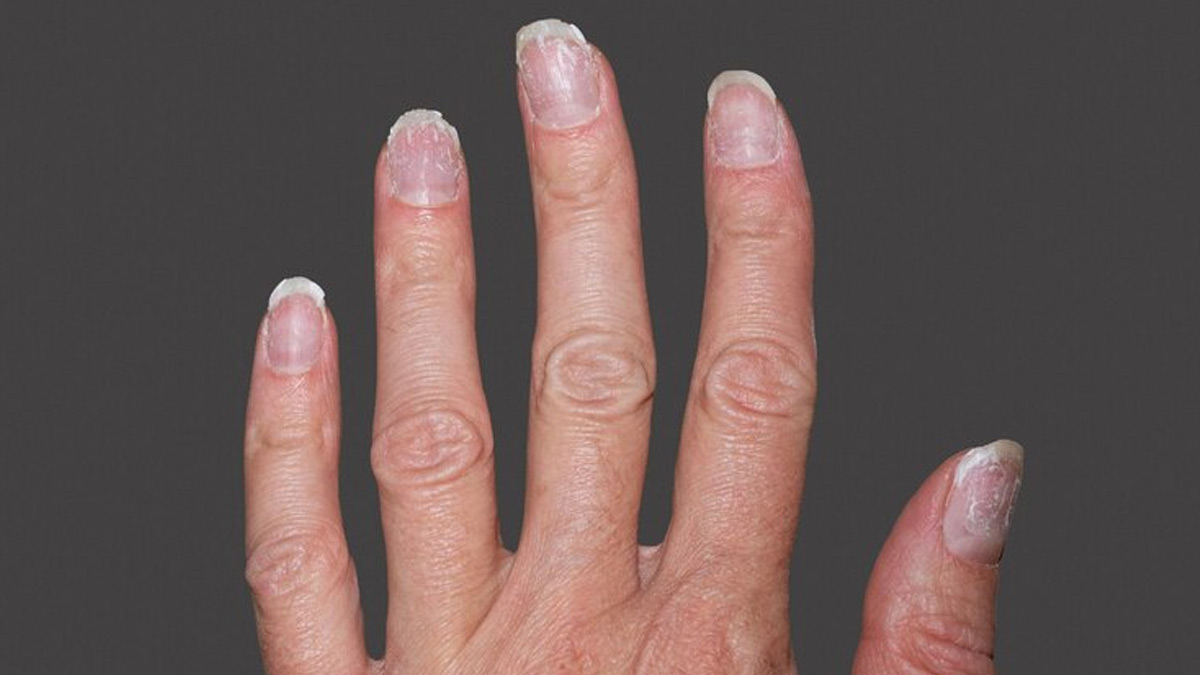
From anaemia to kidney issues, your nails can tell a lot about your overall health. In fact, diseases that affect your whole body can affect your fingernails and toenails in ways you may notice long before you experience any other symptoms. Read this article to learn about 10 fingernail problems that you should not ignore.
Table of Content:-
10 Fingernail Problems You Should Not Ignore

1) Spoon Nails
Spoon nails, also known as koilonychia, can indicate iron deficiency anaemia, liver problems, or low oxygen levels. These are soft nails that look scooped out. It can also be linked to heart disease and hypothyroidism.
2) Clubbed Nails
Clubbed nails are nails that curve outward, and the tips of your fingers enlarge. It can indicate serious lung disease, liver disease, cardiovascular disease, inflammatory bowel disease, or AIDS. Low blood oxygen levels may also change the shape of the fingertip and affect how the nail grows.
3) Nail Pitting
Nail pitting is the depression in the nails that look like ice picks and is most common in people with psoriasis. This may result in itchy, silvery or red scaly patches on your elbows, knees, and other body parts. It can be linked with connective tissue disorders or an autoimmune disease that causes hair loss called alopecia and areata.
Also Read: How Nail Biting Can Impact Your Teeth
4) Beau's Nails
A Beau's line is an indentation across the nail. Injury or illness can interrupt growth in the area under the cuticle, resulting in indentations. It can indicate a zinc deficiency, uncontrolled diabetes, or peripheral vascular disease.
5) Nail Separation
In this condition, your nails become loose and separate from the nail bed or skin underneath. This can also occur when you hurt your finger or toe or reaction to any cosmetic product or drug. A common cause of this symptom is an overactive thyroid gland.
6) Yellow Nail Syndrome
If you have yellow nail syndrome, your nails thicken, and the new growth slows down, resulting in the nails' discolouration. It may indicate respiratory diseases like chronic bronchitis.
7) Terry's Nails
As a result of Terry's nails, most of the nails are white, except for a narrow band of pink at the tip. It may be a cause of an underlying disease such as liver disease, kidney failure, or diabetes. In some cases, it can also be linked to ageing.
8) Fungal Nail Infections
Fungal nail infections cause the nail to thicken and become brittle, crumbly or ragged. You can visit your dermatologist for advice and treatment. This includes filing your nails frequently and applying antifungal infections.
Also Read: Pain In Finger Nails? Beware of These 6 Types Of Nail Problems
9) White Spots
You can check this by pushing the portion of your nails that appears white; if it doesn't fade, you have leukonychia. In leukonychia, there is white discolouration of the nail due to injury or nail infection.
10) Brown vertical stripe on the nail
If you have a brown vertical stripe on the nail, it may be a sign of melanoma. Melanoma is a skin cancer and can start in the nail. It's possible that you have a different condition if your brown nail discolouration is round rather than linear. For instance, brown spots on nails can be a sign of nail psoriasis.
Bottomline
If you notice these symptoms, visit your doctor and take the necessary medications. Your nails can help you discover your underlying disease.
Also watch this video
How we keep this article up to date:
We work with experts and keep a close eye on the latest in health and wellness. Whenever there is a new research or helpful information, we update our articles with accurate and useful advice.
Current Version